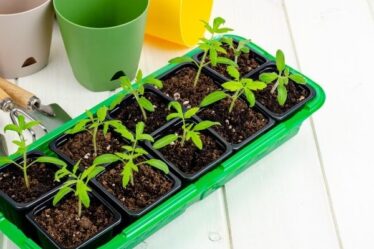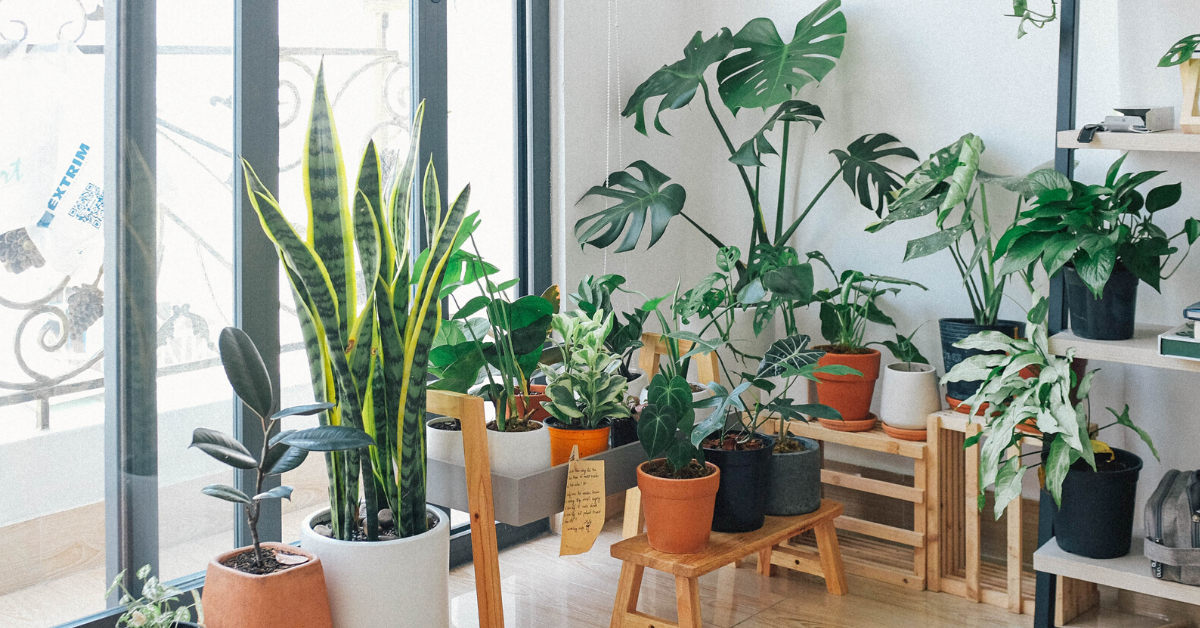
Carrots are one of the healthiest vegetables that you can come across. Good for the eyes, good for strengthening our bones, good for blood sugar, good for controlling diabetes and immune system, good for battling constipation, good for the heart – there’s not much that carrots don’t do for our health.
Growing carrots are also easy, even for a beginner. In a garden or in containers, carrots can be easily grown at home and harvested fresh every day. An excellent storehouse of Vitamin A, Vitamin K1, Potassium, antioxidants and Fiber, carrots also happen to be one of the most versatile vegetables for cooking, baking and garnish.
Are Carrots Difficult to Grow?
Carrots are not at all difficult to grow, but they do require some specific weather and soil conditions. They grow better in a garden than in enclosed spaces, but under the right conditions, they can also be grown in containers.
Carrots are easy to grow because they don’t require a lot of attention or maintenance but can provide fresh and healthy harvest all season long. Homegrown carrots are even better tasting and flavorful than any of the varieties you can buy from your local supplier or supermarket.
Hence, carrots are a popular vegetable home-grown all over the world by both beginner and experienced gardeners.
Can You Grow Carrots from Carrot Tops?
Carrots usually germinate from store-bought, packaged or harvested seeds, you can actually grow them from the leftover carrots at home, i.e. from the carrot tops.
It’s true! Next time you are slicing carrots for a salad or a stew, remember to save the chopped off carrot tops instead of throwing them away. Carrot tops that grow a little green color at the top and come with their own stems and leaves are the ideal candidates to be grown into a full-fledged carrot plant.
No, the carrot tops don’t actually regrow into another carrot when planted, but the top part will eventually grow into a plant and produce seeds. Roots will also start sprouting from the bottom in a few weeks, which can later be planted properly in a garden or a large container for the plant to grow properly.
Although this is a fun method usually used in middle- or junior-school gardening classes for children, carrot plants are mostly grown from seeds that are ready to germinate.
How to Grow Carrots at Home?
- Soil
The soil condition is very important in growing carrots. Whether you are growing carrots in a garden or in a container, the soil needs to be sandy and loamy, as well as well-drained.
Based on where you live in the world, the perfect soil for growing carrots has to be free of any kind of rocks, tree bark, trash or debris. Carrots roots grow deep and there cannot be any type of obstacle under the plant for a perfect harvest. Any manner of obstacle under the ground will lead to deformed and misshaped carrots. At least 12” depth of the soil needs to be completely cleared and well-drained before carrots seeds are planted.
Carrots are underground vegetables, i.e. carrots will grow under the soil. Therefore, if the soil isn’t of the highest quality, it can definitely affect the taste, shape and development of the carrots.
It is much easier to control the quality of the soil when carrots are planted in containers, pots or a raised garden bed. Amy container or raised bed needs to be at least 14” to 16” deep for carrots to grow perfectly in them, as most carrot varieties can grow up to 12” in length. The container needs to be filled with loamy soil that can be drained easily so that water doesn’t linger anywhere in the pot or the soil.
- Sunlight:
Sunlight is also quite important for carrots as they need at least 6 to 8 hours of direct sunlight every single day for their roots to grow properly. They need to be planted in a part of your garden where the sun has direct access. In a garden, planting carrots in an east/west row is a good idea so that they receive ma
Since carrots are root vegetables, it is very easy for other taller plants to overshadow them if planted next to each other. Even when planted in a container, it is important to make sure that they are placed in a location when direct sunlight would fall on carrot plants for at least 6 hours every day.
- Watering:
The soil condition for carrots needs to be kept moist at all times, but not completely wet. Growing carrot plants need a minimum of 1” of water every week, which is usually supplied by rainwater in most regions. If you aren’t getting enough rainfall, the soil needs to be watered regularly and thoroughly.
It’s not enough to water only the top of the carrot plants, but the entire soil bed needs to be thoroughly wetted right down to where the deepest roots are. For extremely sandy soil, more frequent watering is required for the garden bed to stay hydrated.
- Fertilizer:
Carrots need a perfect soil quality that isn’t too acidic. Testing your soil quality before planting is a good idea to know exactly what kind of fertilizer is needed. The soil’s pH balance should be somewhat around 6 or 6.5 which will determine which fertilizer to use on your particular type of soil.
Any regular, granular type fertilizer can work with carrots, but they need to be low in nitrogen. A good fertilizer for carrots would have a balance of 5-10-10 where the nitrogen level will be low, but potassium and phosphate should be optimum.
- Spacing
Carrot seeds need to be sown every two or four inches apart if you have the space available. However, not every single seed that you plant will germinate and grow into plants, so there would automatically be enough space between plants.
On the other hand, planning adequate spacing between seeds will save you the trouble of thinning out your plants, i.e. to remove growing carrot plants and replanting them so that they have enough space between them to prosper.
- Climate:
Carrots prefer cool weather to grow. The best time to plant carrot seeds are in early spring so that they’ll have a good climate to adjust to.
The absolute perfect time to sow carrot seeds is when the temperature of the soil is 50°F so that they can germinate when the temperature is between 55°F and 75°F.
- Weeding:
Weeds can be very harmful for carrot plants and need to be removed as soon as they are seen. Weeds should be manually removed instead of adding weed killer or insecticides to the soil as they might directly enter the carrots themselves through the soil.
Adding mulch to the top of the soil can also be a great help for managing weeds, but this should be only done when the carrot plants have grown a little and spread strong roots in the soil.
- Harvesting:
Carrots, depending on the type you have planted, will be ready to harvest in 2 to 3 months. Their brightly colored orange tops will be visible from above the ground, having grown through the soil – which is an indication that they are ready to be plucked.
If you can ensure the right conditions, carrots are actually a pretty easy vegetable to grow. They do not require a lot of attention or maintenance apart from occasional watering and fertilizing, but the plants can end up giving you a steady harvest for many months.
Frequently Asked Questions (FAQs) About Growing Carrots at Home
- How Long do Carrots Take to Grow?
On average, carrots need around 70 to 80 days to grow from seeds to be ready for harvesting.
Actually, carrots seeds take more time to germinate than it takes the entire plant to grow and mature. Germination can take up to 2 to 3 weeks after the seeds have been planting but after that, progress is much quicker.
- When Should Carrot Plants be Watered?
The best time to water carrot plants is early in the morning because that will allow any unused water to be evaporated when the sun comes out later. Since carrot roots cannot tolerate standing water or extremely wet soil, it is better if the excess water is evaporated by the sun’s heat by the afternoon.
- How Can You Get Seeds from Carrots?
Usually, carrot seeds can be bought from your local garden center, but it is also possible to harvest your own seeds from existing carrot seeds. In fact, you can use the top of your used carrots to grow them into plants, and then harvest seeds from the plant.
The umbels of carrots plants, i.e. the flowers at the top of the plants that dry as the rest of the plant matures, are where you can find seeds. Some carrot plants will fail to produce plants the first year you plant the seeds, but their tops will mature over time and produce a lot of seeds. These seeds can be harvested and stored in an airtight packet or container for months, and later planted.
- Why are My Carrots Not Growing?
If your carrots aren’t growing at all or if they are failing to grow the size they should, it could be because of the soil. If your soil is too heavy or contains too much clay, carrot plants cannot prosper well as their roots cannot grow properly.
The temperature of the soil may also not be right for carrots, which should be between 55°F and 75°F. To maintain the correct temperature of the soil, they should be covered with grass clipping to make the soil cooler or covered with a breathable fabric to make the soil warmer and safe from frost.
If the spacing between your carrot plants isn’t adequate, i.e. if they are overcrowded, the harvest could be smaller. It is very important that you thin out your carrot plants as early as possible when the plants first start to mature.
- What month do I plant carrots?
The right time to plant carrots seeds are in early spring, but no later than the end of August. This is the time when the temperature is absolutely perfect for carrot seeds to germinate.
- What is the Best Soil Mix for Carrots?
The best soil mix for carrots is sandy and loamy soil that has a good air circulation, rich in micronutrients but free from all kinds of rocks and debris. The soil should also have a high level of phosphate and potassium but low nitrogen, with a pH level of 6.0 to 6.8. You can prepare the soil in your garden according to this requirement, or buy ready-to-use potting mix suitable for carrots from any garden center.
- What Happens if you Don’t Harvest Carrots?
If you are not yet ready to harvest all the carrots that have grown in your garden, they can remain under the soil for a long time. However, after a long time, the roots of the carrot plant deteriorate and becomes food for the soil, which aids in the growth of carrots the next season.
- How can you Speed up the Germination Process of Carrots?
Carrot seeds need around 2 to 3 weeks to germinate, which can be quite frustrating for the grower. However, this process can be quickened a little by optimizing the humidity in the air, the temperature of the soil and the circulation of air in the area.
If the temperature of the soil can be maintained between 65°F and 85°F at all times, germination can occur under 10 days. A store-bought or homemade humidity dome over the soil where the seeds have been planted will keep the humidity at an optimum level.
Carrots are extremely worthy vegetables that you can plant once to harvest for a long time. Since they can be planted both in the garden or in a container, they are easy to take care of and harvest with just the right amount of sunlight, water and soil.


